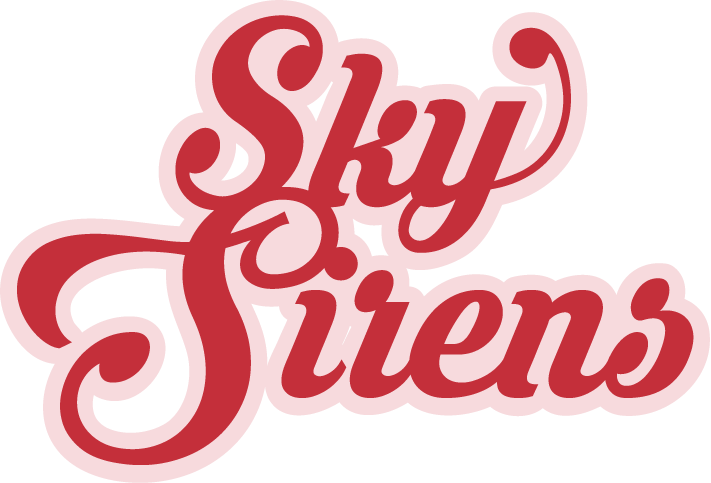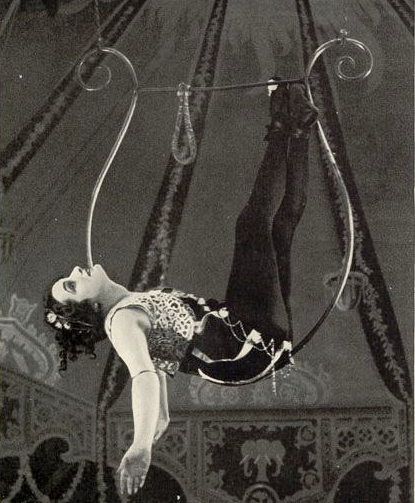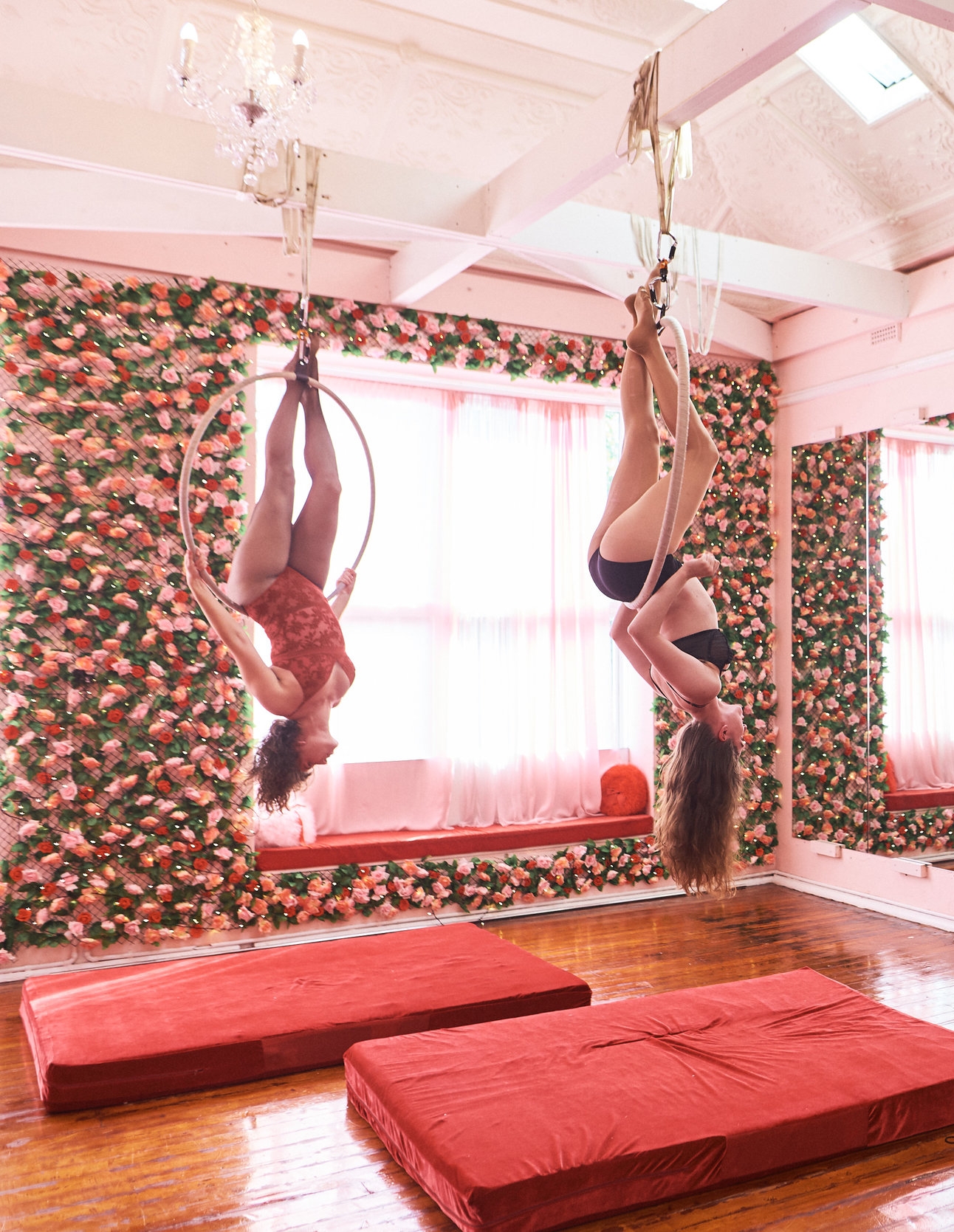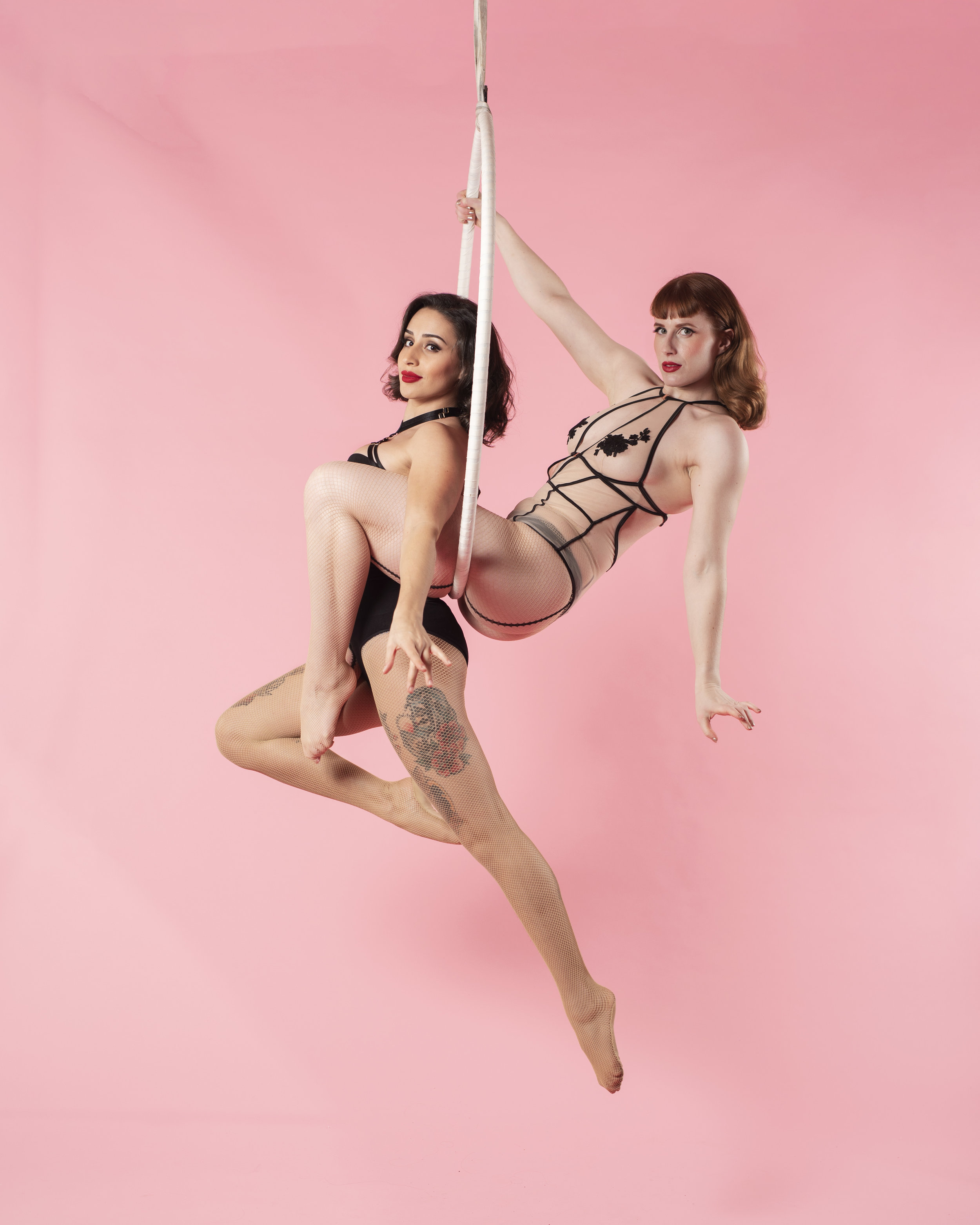We love spinning and flying in the lyra, but where exactly did this beautiful apparatus come from? Circus skills have a long history with performers continually challenging the boundaries of physical strength and agility. In this edition of History Honeys, we are learning about where that wonderful hoop in the sky originated from.
A lyra (also known as an aerial hoop, or a circeaux) is a circular steel hoop that is suspended from a height, using specialized ropes or rigging straps, and a combination of carabiners and swivels. The word lyra comes from the Latin word for “lyre,” which is a harp-like musical instrument that has a circular shape. There is also a constellation of stars called lyra, which actually looks like a hoop shape!
People have been pushing the limits of human capability for hundreds of years, with travelling shows and circuses showcasing the mastery of the aerial arts. Performers created acts using apparatus such as the trapeze, tightrope and straps. Many performers used their ingenuity to come up with new and exciting variations of aerial artistry, and this is how the different apparatus’ started to form.
The first recorded use of an aerial hoop was by a performer called “Caedo” in 1893. Caedo was photographed for a New York newspaper advertisement in a “lyra,” which was a circular shape with a straight bar at the top, modelled off the shape of the musical instrument. As you can see in the photograph opposite, she is posing in a “Babe in the Moon” pose in this lyre-shaped apparatus.
The lyra in its circular form appeared in photos, advertisements and illustrations after the 1890s, but officially resurfaced under the name “lyra” in Cirque du Soleil’s “Varekai” in the mid-2000s. Cirque du Soleil are known for consistently pushing the boundaries with their new and inventive apparatus, so the lyra became one of their staple performances across their range of shows. Many aerialists began to incorporate lyra into their repertoire, and soon performers all over the world were spinning and flying in their own hoops.
With the rise of pole dance and circus classes as recreational activities, lyra started to become a very popular apparatus. Lyra as a fitness and recreational discipline emerged in Australia as it started to be adopted by pole dancers as an additional apparatus to perform on, appearing as featured shows in national competitions, and offered as classes in pole dancing studios. Soon after, Pole Divas opened the first studio dedicated to lyra in the world, Aerial Divas, in Melbourne. You can find lyra classes in studios all across Australia, at pole studios and circus schools.
Performers are continuing to challenge themselves and push the boundaries of performance, experimenting with new shapes and aerial apparatus. From incorporating additional performers for doubles and trio lyra acts, to blending different styles like fire performance, exotic dance and striptease, perfomers continue to create new and exciting things with the lyra. Elements of lyra are also incorporated into performances on apparatus shapes like cubes, chandeliers and even aerial moons and umbrellas! You can see a fantastic example of an aerial moon performed by Shannon Prickett from Melbourne here.
Lyra act from Cirque du Soleil’s Varekai





